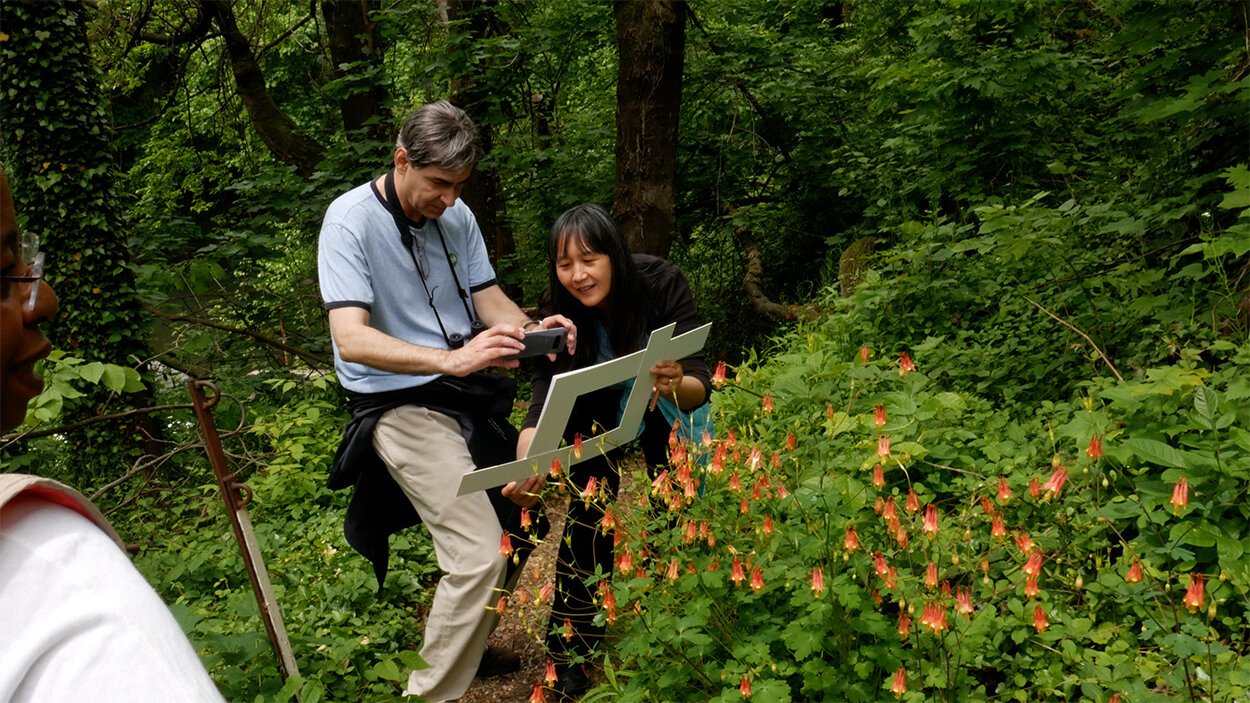Nest + Flow
Artist Jann Rosen-Queralt and ecologist Lea Johnson highlight the way species, water and energy move through the landscape, exposing ecological patterns and processes often overlooked or unseen. Jann and Lea reflect on their experience:
May 4th, 2019, Jones Falls, Baltimore
We met at the Druid Hill Reservoir, which is being completely overhauled in order to comply with the 2006 Environmental Protection Agency (EPA) rules. Before beginning, we presented two questions: Had anyone seen an ecosystem, and if so how was it perceived? Jann suggested that one needed to physically experience it, possess scientific knowledge, and use imagination since all functions cannot be seen at once. Two other threads were introduced, framing and cross-scale interactions (micro-macro-micro). Jann included cut mats that participants could use to “frame” their sights – directing them to zero in on one aspect or many aspects of our surroundings throughout the walk. Lea introduced magnifying glasses, enabling exploration of unseen detail. While observing the reservoir renovation we discussed Baltimore’s watersheds, emphasizing the Jones Falls, water supply (drinking, storm water, and sewage), and framing. As we moved east we looked at interactions between human and natural processes, such as an eroding hillside and desire paths.
As we approached the Jones Falls Expressway our conversation moved to flows and dispersal, while we observed flowing water, traffic, scent, and pollen moving across the landscape. The next highlight was observing nesting Yellow Crowned Night Herons in the Sycamore tree branches spreading across the falls way. Forging on to Keswick Road and the Stone Mill residential community, we used dousing rods to discover hidden flows, urban heterogeneity, sediment transport and deposition, and plant cultivation and escape. The second to last stop took us past Mt. Vernon Mill No. 1, where we considered the different ways people perceive the power of water and looked closely at leaves from the high ground above the river. From there we headed down to Round Falls, where we were surrounded by the sound of water and we asked participants to consider the complexities of harnessing water as a resource while accepting the results of human impact on it. As we walked back up a refurbished path to the park, the last emphasis was urban ecological restoration, and the flows of energy and water through food webs.
Watching people engage with one another, ask questions, examine plant leaves, seeds and flowers with magnifying glasses, listening to the ooh’s and ahh’s upon locating the birds and the nests hidden in the tree canopy, and successfully using the dousing rods made it perfectly clear that the participants were engaged and excited. One walker offered further historical context for Druid Hill Park and its connection to slavery and the production of textiles. Walkers made many connections to their own experiences of flow, water, and species in cities, engaging in lively conversation throughout the walk.

